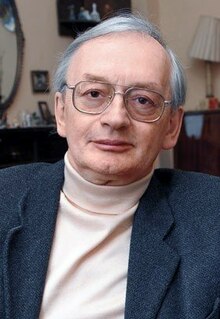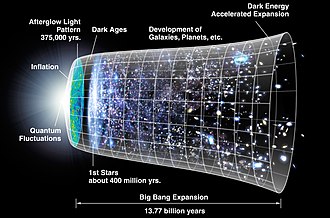
The Big Bang is a physical theory that describes how the universe expanded from an initial state of high density and temperature. It was first proposed in 1931 by Roman Catholic priest and physicist Georges Lemaître when he suggested the universe emerged from a "primeval atom". Various cosmological models of the Big Bang explain the evolution of the observable universe from the earliest known periods through its subsequent large-scale form. These models offer a comprehensive explanation for a broad range of observed phenomena, including the abundance of light elements, the cosmic microwave background (CMB) radiation, and large-scale structure. The overall uniformity of the universe, known as the flatness problem, is explained through cosmic inflation: a sudden and very rapid expansion of space during the earliest moments. However, physics currently lacks a widely accepted theory of quantum gravity that can successfully model the earliest conditions of the Big Bang.

Physical cosmology is a branch of cosmology concerned with the study of cosmological models. A cosmological model, or simply cosmology, provides a description of the largest-scale structures and dynamics of the universe and allows study of fundamental questions about its origin, structure, evolution, and ultimate fate. Cosmology as a science originated with the Copernican principle, which implies that celestial bodies obey identical physical laws to those on Earth, and Newtonian mechanics, which first allowed those physical laws to be understood.
In physical cosmology, cosmic inflation, cosmological inflation, or just inflation, is a theory of exponential expansion of space in the early universe. The inflationary epoch is believed to have lasted from 10−36 seconds to between 10−33 and 10−32 seconds after the Big Bang. Following the inflationary period, the universe continued to expand, but at a slower rate. The re-acceleration of this slowing expansion due to dark energy began after the universe was already over 7.7 billion years old.
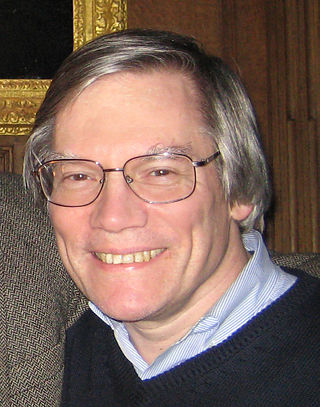
Alan Harvey Guth is an American theoretical physicist and cosmologist who is the Victor Weisskopf Professor of Physics at the Massachusetts Institute of Technology. Along with Alexei Starobinsky and Andrei Linde, he won the 2014 Kavli Prize "for pioneering the theory of cosmic inflation." Guth's research focuses on elementary particle theory and how particle theory is applicable to the early universe.

Rashid Alievich Sunyaev is a German, Soviet, and Russian astrophysicist of Tatar descent. He got his MS degree from the Moscow Institute of Physics and Technology (MIPT) in 1966. He became a professor at MIPT in 1974. Sunyaev was the head of the High Energy Astrophysics Department of the Russian Academy of Sciences, and has been chief scientist of the Academy's Space Research Institute since 1992. He has also been a director of the Max Planck Institute for Astrophysics in Garching, Germany since 1996, and Maureen and John Hendricks Distinguished Visiting Professor in the School of Natural Sciences at the Institute for Advanced Study in Princeton since 2010.

Leonard Susskind is an American theoretical physicist, Professor of theoretical physics at Stanford University and founding director of the Stanford Institute for Theoretical Physics. His research interests are string theory, quantum field theory, quantum statistical mechanics and quantum cosmology. He is a member of the US National Academy of Sciences, and the American Academy of Arts and Sciences, an associate member of the faculty of Canada's Perimeter Institute for Theoretical Physics, and a distinguished professor of the Korea Institute for Advanced Study.
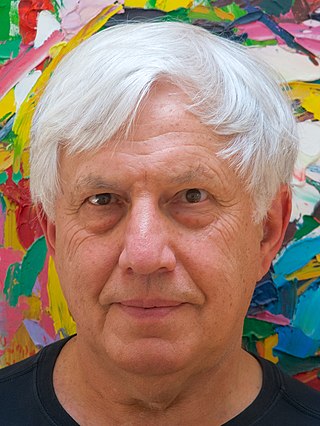
Andrei Dmitriyevich Linde is a Russian-American theoretical physicist and the Harald Trap Friis Professor of Physics at Stanford University.
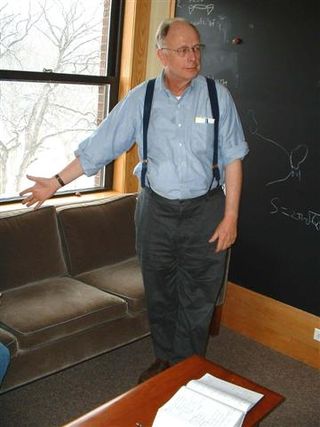
James Burkett Hartle was an American theoretical physicist. He joined the faculty of the University of California, Santa Barbara in 1966, and was a member of the external faculty of the Santa Fe Institute. Hartle is known for his work in general relativity, astrophysics, and interpretation of quantum mechanics.
Edward P. Tryon was an American scientist and a professor emeritus of physics at Hunter College of the City University of New York (CUNY). He was the first physicist to propose that our universe originated as a quantum fluctuation of the vacuum.

Alexander Vilenkin is the Leonard Jane Holmes Bernstein Professor of Evolutionary Science and Director of the Institute of Cosmology at Tufts University. A theoretical physicist who has been working in the field of cosmology for 25 years, Vilenkin has written over 260 publications.
Eternal inflation is a hypothetical inflationary universe model, which is itself an outgrowth or extension of the Big Bang theory.
The Gruber Prize in Cosmology, established in 2000, is one of three prestigious international awards worth US$500,000 awarded by the Gruber Foundation, a non-profit organization based at Yale University in New Haven, Connecticut.

Stephen William Hawking, was an English theoretical physicist, cosmologist, and author who was director of research at the Centre for Theoretical Cosmology at the University of Cambridge. Between 1979 and 2009, he was the Lucasian Professor of Mathematics at Cambridge, widely viewed as one of the most prestigious academic posts in the world.
The Tomalla Foundation for Gravity Research promotes research into gravity in Switzerland and in the world. It was founded in 1982 according to testamentary wishes of Dr. Walter Tomalla, an engineer from Basel, Switzerland. Every third year, the foundation awards prizes for exceptional research in gravitation and/or cosmology, and funds research fellows and visitors for gravity research at Swiss universities.
The zero-energy universe hypothesis proposes that the total amount of energy in the universe is exactly zero: its amount of positive energy in the form of matter is exactly canceled out by its negative energy in the form of gravity. Some physicists, such as Lawrence Krauss, Stephen Hawking or Alexander Vilenkin, call or called this state "a universe from nothingness", although the zero-energy universe model requires both a matter field with positive energy and a gravitational field with negative energy to exist. The hypothesis is broadly discussed in popular sources. Other cancellation examples include the expected symmetric prevalence of right- and left-handed angular momenta of objects, the observed flatness of the universe, the equal prevalence of positive and negative charges, opposing particle spin in quantum mechanics, as well as the crests and troughs of electromagnetic waves, among other possible examples in nature.
David I. Kaiser is an American physicist and historian of science. He is Germeshausen Professor of the History of Science at the Massachusetts Institute of Technology (MIT) and a full professor in MIT's department of physics. He also served as an inaugural associate dean for MIT's cross-disciplinary program in Social and Ethical Responsibilities of Computing.

Viatcheslav Fyodorovich Mukhanov is a Soviet/Russian born German theoretical physicist and cosmologist. He is best known for the theory of Quantum Origin of the Universe Structure. Working in 1980-1981 with Gennady Chibisov in the Lebedev Physical Institute in Moscow he predicted the spectrum of inhomogeneities in the Universe, which are originated from the initial quantum fluctuations. The numerous experiments in which there were measured the temperature fluctuations of the Cosmic Microwave Background Radiation are in excellent agreement with this theoretical prediction, thus confirming that the galaxies and their clusters originated from the initial quantum fluctuations. Later on Mukhanov proved that the results he obtained with G. Chibisov in 1981 are of the generic origin and he has developed the general consistent quantum cosmological perturbation theory.
Starobinsky inflation is a modification of general relativity used to explain cosmological inflation.

Hiranya Vajramani Peiris is a British astrophysicist at the University of Cambridge, where she holds the Professorship of Astrophysics (1909). She is best known for her work on the cosmic microwave background radiation, and interdisciplinary links between cosmology and high-energy physics. She was one of 27 scientists who received the Breakthrough Prize in Fundamental Physics in 2018 for their "detailed maps of the early universe."
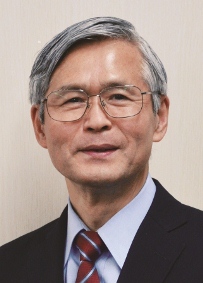
Katsuhiko Sato is a Japanese physicist and Special University Professor, emeritus, the University of Tokyo.
